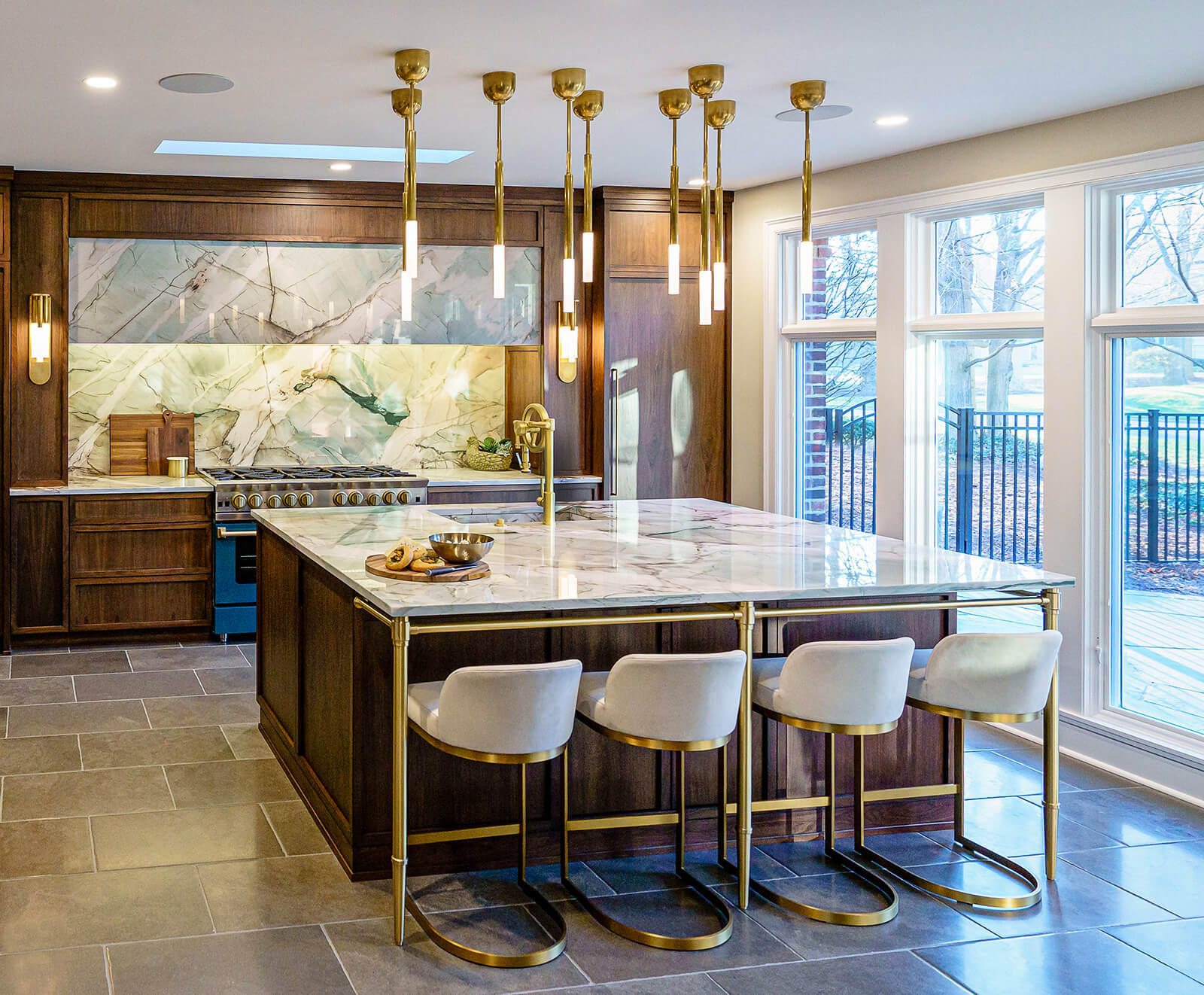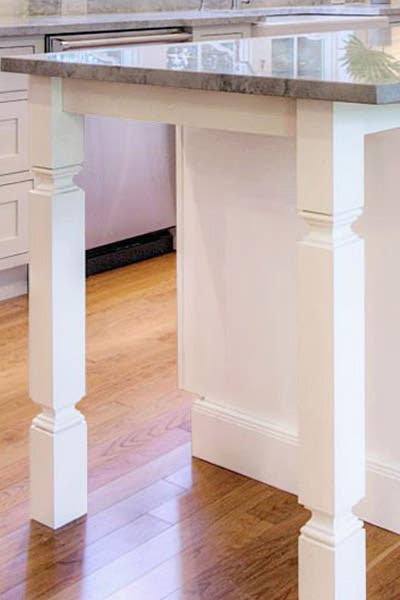Checking Out the Numerous Styles of Legs For Cooking Area Island: What You Required to Know
In the realm of kitchen area design, the option of legs for your island is greater than a plain aesthetic decision; it substantially influences both design and functionality. From the smooth class of modern steel to the classic charm of traditional timber, each option offers special benefits and layout possibilities. Industrial styles can pass on a tough personality, while rustic farmhouse legs stimulate a sense of heat and custom. Furthermore, the appearance of one-of-a-kind ornamental legs enables for individual expression within functional furnishings. The inquiry stays-- just how do you establish which style finest straightens with your vision?
Modern Steel Legs
Modern metal legs have actually become a preferred selection for kitchen area islands, supplying both sturdiness and a streamlined visual. These legs are generally crafted from materials such as stainless steel, aluminum, or functioned iron, making them resistant to damage, which is important in a high-traffic location like the kitchen. Their robust building ensures stability, fitting the weight of hefty countertops and day-to-day usage.
Along with their strength, modern steel legs been available in numerous designs, from minimal to commercial styles, enabling property owners to tailor their cooking area islands to their distinct preferences. The reflective surfaces of metal can add a modern touch, improving the general illumination of the kitchen area room. Steel legs can be matched with a large variety of counter top products, integrating perfectly with granite, quartz, or even redeemed timber.
An additional benefit of steel legs is their ease of maintenance; they can be merely cleaned down to eliminate any type of spills or discolorations, making certain durability and tidiness. Generally, modern-day steel legs not only supply structural assistance for cooking area islands yet likewise add significantly to the aesthetic charm, making them a favored option for modern cooking area styles.
Traditional Wood Legs

Typical wood legs can take different types, consisting of turned, tapered, or square designs. Transformed legs feature a rounded profile with elaborate outlining, adding a touch of elegance. Tapered legs, on the other hand, supply an even more streamlined look while keeping a standard vibe. Square legs offer a durable appearance, which can develop a sense of security and weightiness in the layout.
Additionally, wood legs can be discolored or painted to match existing kitchen cabinetry or design, giving personalization alternatives that enhance the overall visual of the kitchen. Matching these legs with a wood counter top or other wood aspects can create a cohesive appearance, stressing the warmth and personality that standard wood offers cooking area islands. Hence, conventional timber legs continue to be a classic option for those seeking beauty and functionality in their kitchen style.
Industrial Design Legs

The flexibility of industrial legs permits them to enhance a range of kitchen counters, from recovered wood to brightened concrete. Their integral strength guarantees sturdiness, making them click to read more ideal for sturdy usage. In addition, the minimal design commonly associated with commercial design legs can boost the overall space without frustrating it.
Industrial legs can be incorporated into various cooking area arrangements, from open-concept areas to much more compact layouts. Inevitably, industrial style legs can change a kitchen island into a declaration piece, marrying form and function in a harmonious way.
Rustic Farmhouse Legs
Rustic farmhouse legs embody a charming mix of practice and warmth, making them a popular choice for kitchen areas that look for to stimulate a comfortable, inviting environment. Characterized by their strong building and construction and natural materials, these legs typically feature wood with a distressed coating, showcasing the elegance of flaws that comes with age. This aesthetic not only reinforces the farmhouse design however also includes character and authenticity to the cooking area space.
Commonly, rustic farmhouse legs are developed with durable, beefy accounts that supply substantial assistance for the cooking area island. Commonly crafted from recovered wood, they contribute to a sustainable layout while supplying a special tale via their varied structures and tones. The natural grain patterns and knots found in these materials enhance the aesthetic allure and bring a feeling of nature click this link indoors.
In addition to their visual value, rustic farmhouse legs can be coupled with different tabletop materials, such as butcher block or stone, developing an unified equilibrium between rustic beauty and modern capability. This flexibility enables property owners to customize their kitchen area islands according to individual choices, ensuring that the room continues to be both trendy and sensible for daily usage.
Special Ornamental Legs
Regularly overlooked, one-of-a-kind ornamental legs can change a basic kitchen island into a declaration piece that reflects specific style and creative thinking. These legs offer not just as structural supports however likewise as creative expressions that improve the total visual of the kitchen.
Readily available in a variety of styles, unique decorative legs can range from detailed functioned iron scrollwork to strongly turned wood patterns. For those leaning in the direction of an extra modern-day look, sleek steel legs in geometric forms can give a minimal yet distinctive appeal. Redeemed wood legs with artisanal describing bring heat and character, lining up redirected here with lasting design concepts.
Integrating distinct decorative legs into your kitchen island allows for limitless personalization. Shade, structure, and kind can be controlled to integrate with existing style or to present an interesting comparison. For example, coupling a rustic wooden top with sleek brass legs produces a striking association that attracts the eye.
Inevitably, choosing one-of-a-kind ornamental legs is an opportunity to reveal personal taste while making certain functionality. By prioritizing both style and durability, house owners can produce a kitchen area island that not only stands out yet likewise works as a sensible centerpiece for cooking ventures.
Conclusion
Modern steel legs provide a sleek look, while standard timber legs provide warmth and personality. Industrial-style legs introduce a metropolitan appeal, and rustic farmhouse legs highlight natural appeal and toughness.
A selection of typical wood legs can enhance the appeal and heat of kitchen area islands, appealing to home owners who like a traditional aesthetic. Coupling these legs with a timber counter top or various other wood aspects can create a natural look, highlighting the warmth and personality that standard wood brings to kitchen area islands. Modern metal legs supply a sleek appearance, while typical wood legs supply warmth and character. Industrial-style legs present a metropolitan appeal, and rustic farmhouse legs highlight all-natural elegance and strength. Unique ornamental legs serve as a way of customization, guaranteeing that the cooking area island not only sustains useful use but additionally enhances the total style of the kitchen area.